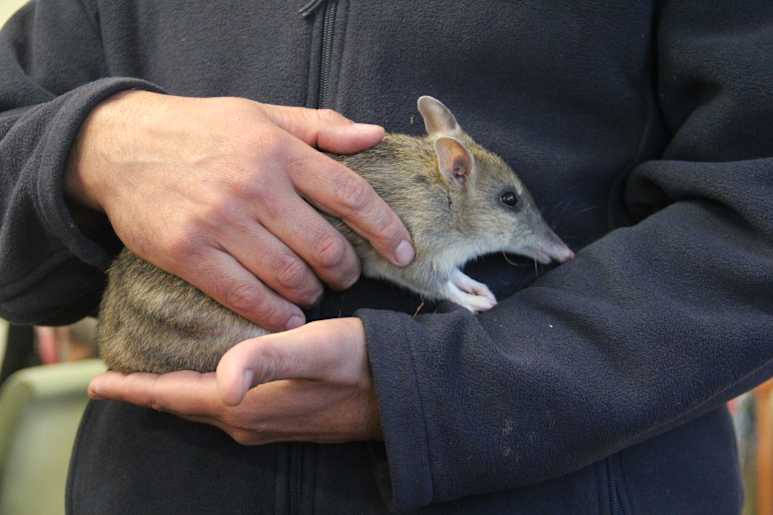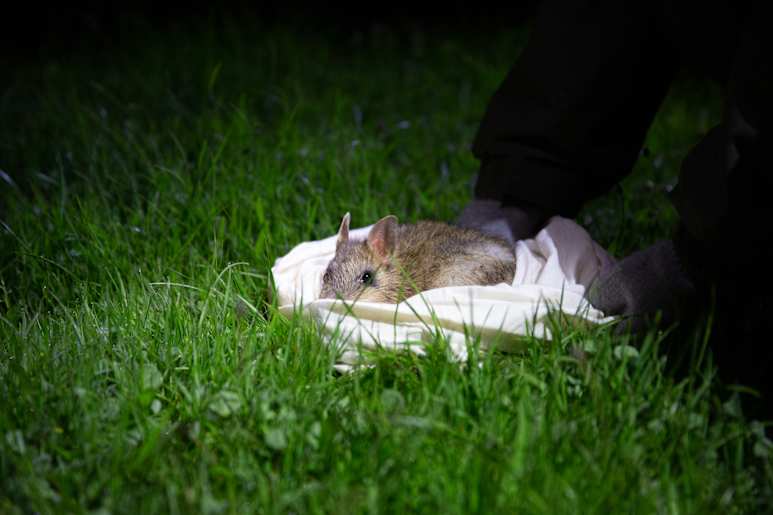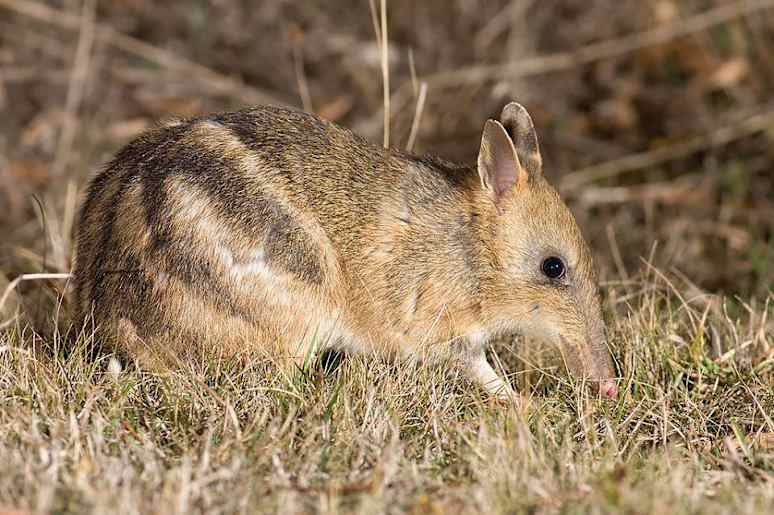
Senior Scientist with the Nature Parks, Duncan Sutherland, said there are now around 150 bandicoots on Churchill Island and many more spread across Phillip Island. The species was first introduced to Churchill Island in 2015, having been virtually wiped out on the mainland. Photo courtesy of Phillp Island Nature Parks.

Since being released a decade ago, researchers have closely monitored the population, including trapping them for regular health checks. Photo courtesy of Phillp Island Nature Parks.

The Eastern barred bandicoot has been brought back from the brink of extinction, following its successful introduction to Churchill Island a decade ago. Photo courtesy of Phillp Island Nature Parks.
Phillip Island Nature Parks is celebrating the 10-year success of the Eastern barred bandicoots' translocation to Churchill Island - a move that literally brought the species back from the brink of extinction.
The Eastern barred bandicoot was first introduced to Churchill Island in 2015. Prior to that, the species had been largely wiped out on the mainland - only surviving within three reserves in Victoria surrounded by predator-barrier fences.
Senior Scientist with the Nature Parks, Duncan Sutherland, said there are now around 150 bandicoots on Churchill Island and many more spread across Phillip Island.
"Eastern barred bandicoots have now been on Churchill Island for a decade, which enabled their release to Phillip Island eight years ago, and since then we have seen them breed and grow in numbers, expanding into areas across most of Phillip Island," Dr Sutherland said.
"Each year they've travelled further afield on Phillip Island and in recent months we have had more sightings in populated areas, which is reassuring for our conservation efforts. For the first time, an Eastern barred bandicoot was recently seen in the Red Rocks area in dune vegetation and on the outskirts of Rhyll.
"We are delighted to see the bandicoots bounce back in recent years and it is a tremendous outcome for a species that had once been deemed extinct in the wild.
But we cannot be complacent. Feral and domestic cats still pose a significant risk for these bandicoots through predation and by spreading the disease toxoplasmosis."
Disease
The milestone comes as new research by the Nature Parks and the University of Melbourne reveals just how deadly toxoplasmosis is to the bandicoots.
Toxoplasmosis is a disease caused by a parasite, which is only spread through the environment by domestic and feral cats. Now that Eastern barred bandicoots have been found to be highly susceptible to toxoplasmosis it is apparent that when they share a landscape with cats, toxoplasmosis can result in significant impacts on bandicoot populations.
The research article, which has been published in the Journal of Wildlife Diseases, assessed the impact of the disease in endangered Eastern barred bandicoots on Phillip and French Islands. It found most, if not all, die within two to three weeks of infection, giving conservationists the first real insight into the magnitude of its impact on bandicoot populations.
But despite the impacts of toxoplasmosis, bandicoots were continuing to expand, reflecting the species' high reproductive potential and the benefits of ongoing efforts to reduce the number of feral cats on Phillip Island.
"Moving the Eastern barred bandicoots to island safe havens without foxes, like Churchill, French and Phillip islands, has effectively given them a lifeline," Dr Sutherland said.
Bass MP Jordan Crugnale added: "We're celebrating 10 years since Eastern barred bandicoots made Churchill Island their home - a big win for one of Victoria's inspiring wildlife comeback stories."
As the Eastern barred bandicoots spread into residential areas, including Ventnor to Newhaven and from Smiths Beach to Rhyll, Dr Sutherland said the community played an important role in reporting sightings on the bandicoot portal and helping create bandicoot friendly gardens where the nocturnal marsupials can sleep safely during the day.
Responsible pet ownership and keeping cats contained 24/7 was also crucial, he said.
The successful translocations of the Eastern barred bandicoot to Churchill and Phillip Islands has been a collaboration between the Nature Parks, Odonata
Foundation, Zoos Victoria, the Department of Energy, Environment and Climate Action, Parks Victoria, The University of Melbourne, National Trust of
Australia and Conservation Volunteers Australia.
Seen a bandicoot? Report it at: ebb.natureparksresearch.com.au/sighting/





